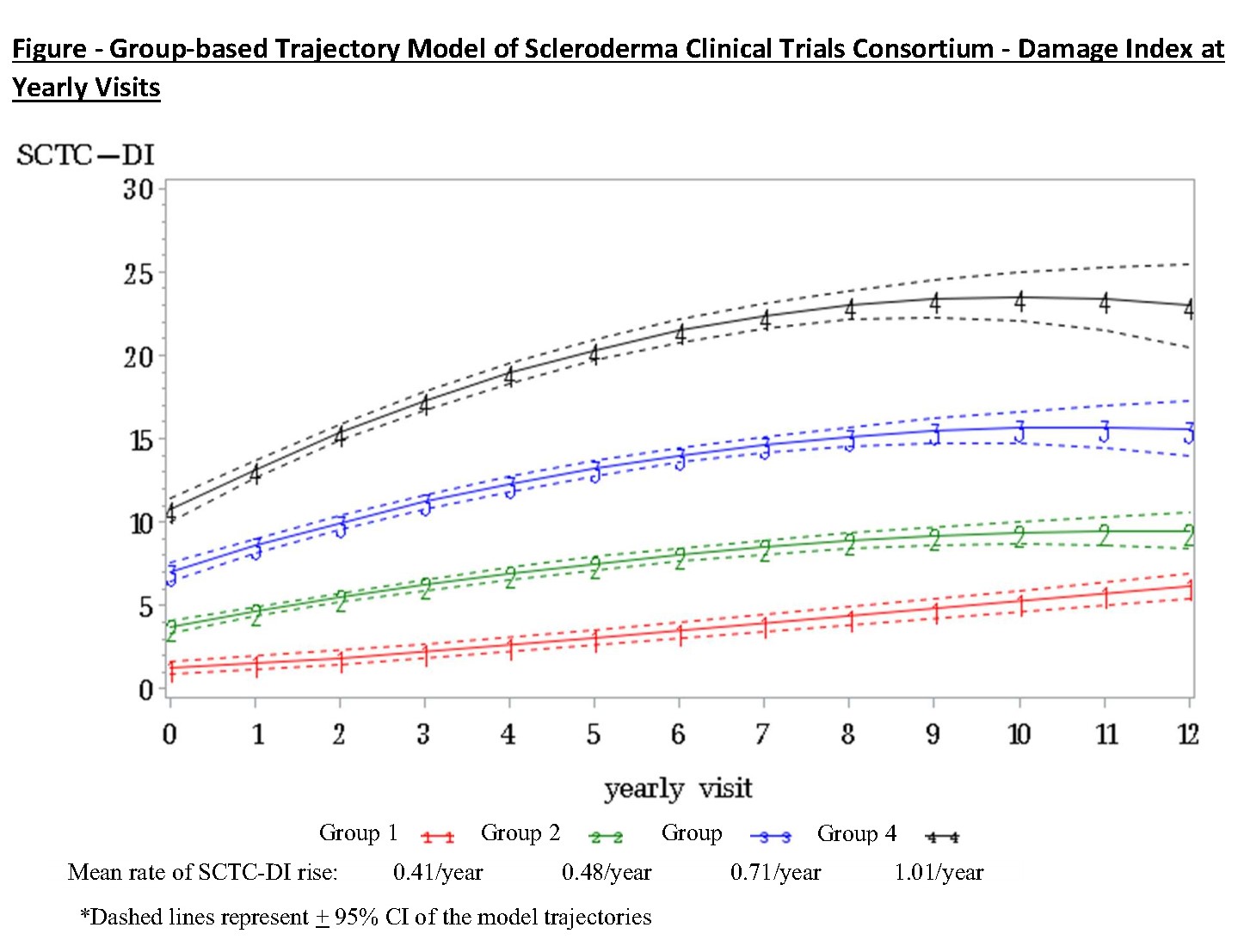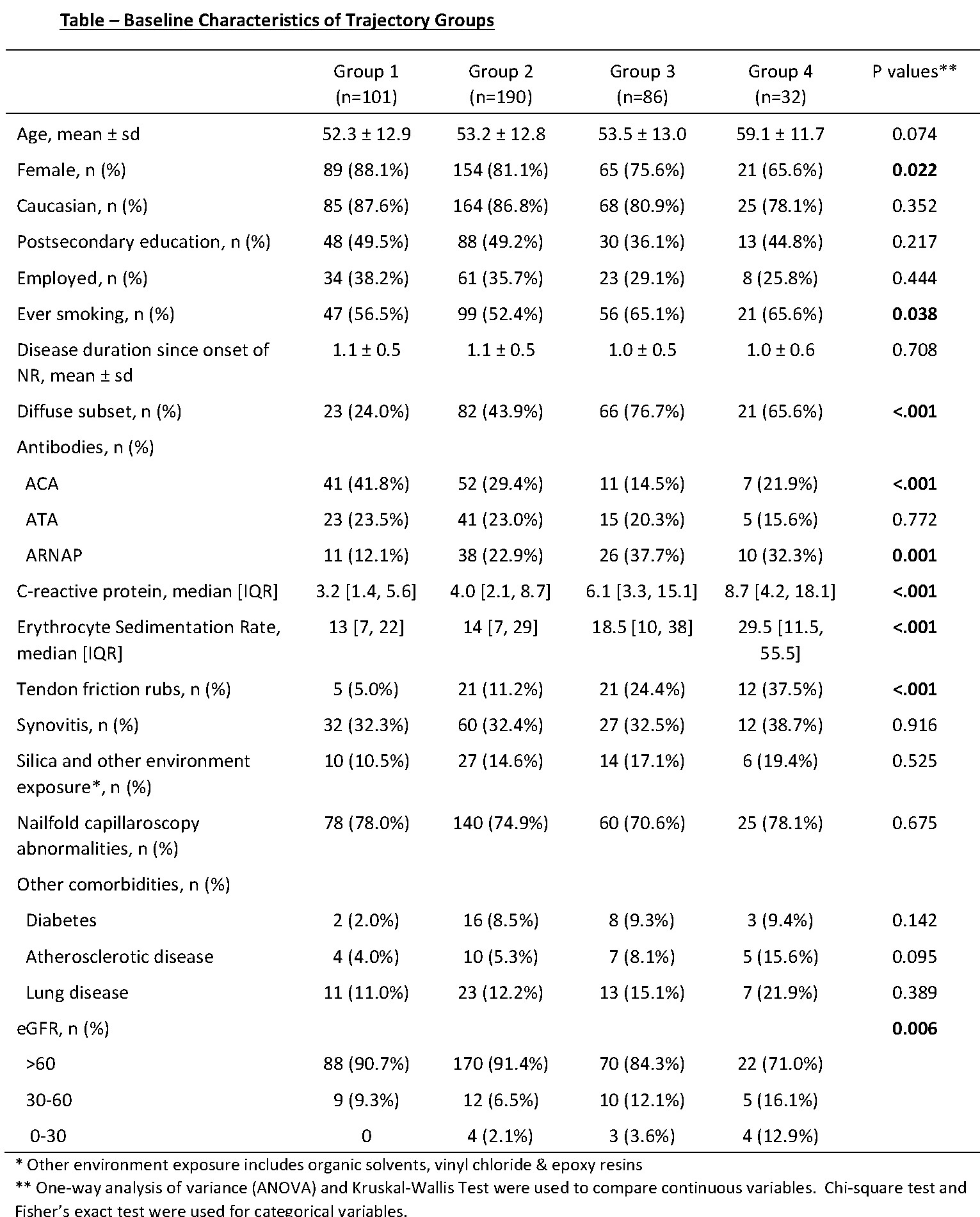Session Information
Date: Monday, November 9, 2020
Session Type: Abstract Session
Session Time: 3:00PM-3:50PM
Background/Purpose: Systemic sclerosis (SSc) is a rare systemic autoimmune disease associated with a high mortality and characterized by the accrual of organ damage over time. The Scleroderma Clinical Trials Consortium Damage Index (SCTC-DI) is a recently validated tool to measure this damage (Ferdowsi et al., 2019). Identifying predictors of future damage is of utmost importance for prognostication and guiding research. This study aimed to identify if there are distinct trajectories of damage accrual from early in the disease and to determine which variables are associated with different trajectories, which could help guide when to initiate aggressive therapy early.
Methods: Using a prospective cohort design, incident adult cases of SSc (disease onset < 2 years) were identified in two large databases. Patients from these databases are enrolled consecutively and followed with yearly standardized assessments. Patients who met the ACR-EULAR classification criteria for systemic sclerosis with at least two cohort visits and two SCTC-DI values were included. Due to missing data, three elements of the SCTC-DI were removed from the scoring (small joint contractures, pericardial effusion, GAVE). Group-based trajectory modelling (GBTM) was used to identify clusters of patients with similar DI trajectories. Their baseline characteristics were then compared for statistical significance using a one way-analysis of variance (ANOVA) and Kruskal-Wallis Test for continuous variables and chi-square test and Fisher’s exact test for categorical variables.
Results: 409 patients were included in this study. Four trajectories (Figure) of damage accrual were identified, with increasing damage over time and a plateauing effect observed in the three groups with higher damage scores. The average of posterior probabilities of group membership assigned to each group was 0.92, suggesting our trajectory model fits well. The groups were distinct at baseline, with patients who had the fastest damage accrual also having a higher baseline SCTC-DI. Clinical factors that were more prevalent in the worst damage trajectories were older age, male sex, current or previous smoking history, diffuse disease, tendon friction rubs, renal impairment, anti-RNA polymerase positivity and higher baseline inflammatory markers (Table). Anti-centromere antibody positivity was more prevalent in the lower disease damage groups.
Conclusion: We have identified four distinct trajectories of disease damage in a combined incident cohort of patients with SSc. Several clinical and serological characteristics were more prevalent in those with worse damage trajectories. These findings may be helpful in recognizing patients in whom early aggressive treatment is necessary.
To cite this abstract in AMA style:
Barbacki A, Baron M, Wang M, Zhang Y, Nikpour M, Man A. Damage Trajectories in Systemic Sclerosis Using Group-Based Trajectory Modeling [abstract]. Arthritis Rheumatol. 2020; 72 (suppl 10). https://acrabstracts.org/abstract/damage-trajectories-in-systemic-sclerosis-using-group-based-trajectory-modeling/. Accessed .« Back to ACR Convergence 2020
ACR Meeting Abstracts - https://acrabstracts.org/abstract/damage-trajectories-in-systemic-sclerosis-using-group-based-trajectory-modeling/


